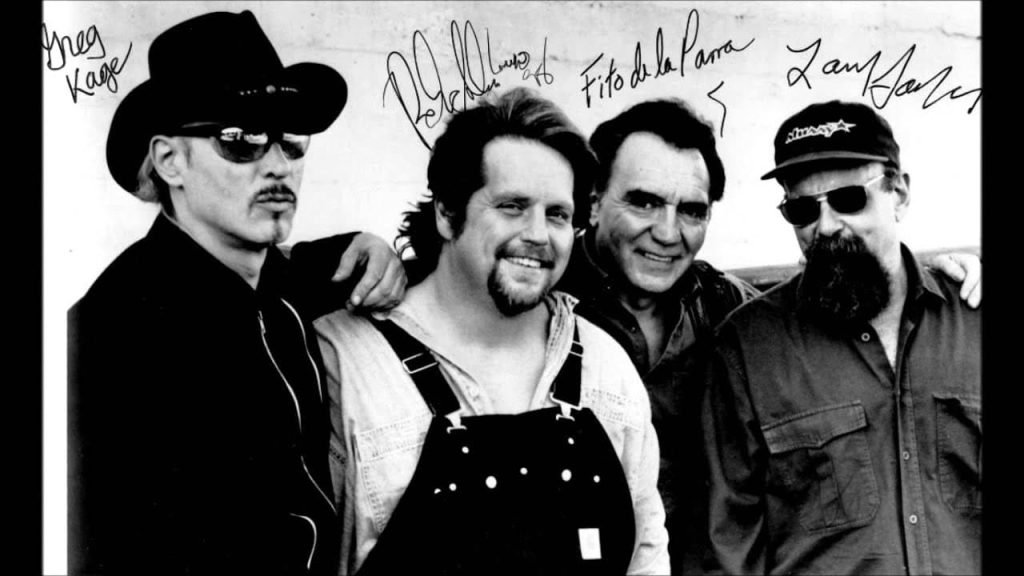
Canned Heat’s Call for Unity: “Let’s Work Together” – A Blues-Rock Anthem with a Message of Togetherness
In 1970, Canned Heat delivered one of their most memorable hits with “Let’s Work Together,” a spirited call for unity and collaboration during a time of social upheaval. The track, originally written and recorded by Wilbert Harrison in 1962 as “Let’s Stick Together,” was transformed by Canned Heat into a blues-rock anthem that resonated with the counterculture movement of the late 1960s and early 1970s. Peaking at No. 26 on the Billboard Hot 100 in the U.S. and reaching the Top 10 in the UK, the song’s upbeat energy and positive message helped solidify Canned Heat’s place in rock history.
“Let’s Work Together” is more than just a song—it’s a rallying cry for collective action and harmony. At a time when the world was grappling with political unrest, civil rights movements, and the ongoing war in Vietnam, the song’s lyrics served as a reminder that unity and cooperation were essential for progress. With lines like, “Together we’ll stand, divided we’ll fall,” the track emphasizes the power of working together for a common cause, whether that be in personal relationships, communities, or society at large.
Musically, the song blends Canned Heat’s signature blues-rock sound with a groove that’s infectious and uplifting. The band, known for their deep love of the blues, brought a raw, earthy energy to the track that made it stand out on both the airwaves and live performances. The gritty slide guitar work of Alan Wilson and the driving rhythm section of Larry Taylor on bass and Fito de la Parra on drums create a steady, pulsating foundation that complements the song’s message of solidarity. Bob “The Bear” Hite’s rough, powerful vocals add an authentic edge to the track, driving home the urgency and passion behind the lyrics.
Canned Heat’s rendition of “Let’s Work Together” retains the simplicity of the original, but their interpretation imbues it with a sense of immediacy and communal spirit that was perfectly in tune with the cultural zeitgeist. The song moves at a laid-back yet insistent pace, inviting listeners to join in, sing along, and, most importantly, reflect on its message. The infectious chorus—”Come on, come on, let’s work together”—acts as both a mantra and a call to action, making the song as relevant today as it was when it first hit the charts.
What makes “Let’s Work Together” so enduring is its universal theme. While rooted in the specific social and political context of the early 1970s, its call for cooperation and unity transcends time. The message is clear and simple: whether in relationships, communities, or larger societal structures, working together is always better than going it alone. It’s a sentiment that continues to resonate in an increasingly divided world.
Over the years, Canned Heat’s version of “Let’s Work Together” has become a staple of classic rock playlists and a favorite at festivals and concerts. Its upbeat, danceable rhythm makes it a crowd-pleaser, while its lyrics offer a moment of reflection on the importance of unity. The song’s longevity can also be attributed to its timeless message—people continue to find solace and inspiration in its words, whether they’re navigating personal struggles or addressing broader social issues.
While Canned Heat’s catalog includes many blues-infused rock classics, “Let’s Work Together” stands out as a track that perfectly encapsulates the band’s ethos. Their commitment to spreading a message of love, peace, and cooperation made them favorites among the Woodstock generation, and this song, in particular, remains one of their most cherished contributions to rock music.
As we listen to “Let’s Work Together” today, it’s easy to see why it remains so relevant. It’s more than a blues-rock classic—it’s a reminder that, despite our differences, we’re stronger when we come together. And with its infectious rhythm, soulful instrumentation, and timeless message, this track continues to inspire listeners to work towards a better, more unified world.